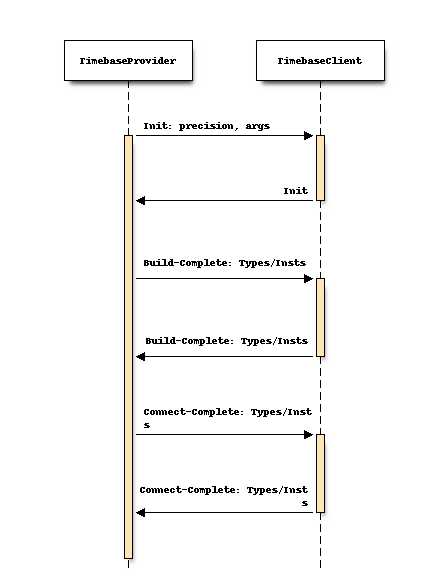Interaction Protocol
Ideally, understanding the way in which different parts of the TbLink-RPC system interact is only necessary for developers and integrators. As a user, having a deeper understanding of “what goes on under the hood” is primarily useful when debugging an issue. That said, the more you know…
In some cases, the interaction protocol is literally implemented by sending RPC messages over sockets or through FIFOs. In other cases, the interaction protocol is implemented by a series of method calls. If you’re interested in the details of one of the transport protocols, please see: - TBD (1) - TBD (2)
Initialization Protocol
The initialization protocol comes into play when a connection between two endpoints is initiated. At each step in the protocol, different information is assumed to be available and/or consistent at each of the two endpoints.

During initialization, the two endpoints exchange and compare information to ensure that the two have a consistent view of interface types and instances. Endpoints have a peer relationship. One outcome is that the order in which each message type is exchanged is not significant. For example, the TimebaseClient could have been first to send the Init message.
An endpoint provides methods both to signal that a phase is complete (eg build-complete) and to confirm that the peer endpoint has also signaled phase completion. A phase is complete from the perspective of an endpoint once it has signaled its completion of the phase and has confirmed that its peer has also completed the phase.
At the conclusion of each initialization phase, endpoints have access to specific information. A description of each phase and the information available at its completion is below.
Init
On completion of the initialization phase, the TimebaseConsumer endpoint has access to the time-precision of the TimebaseProducer and has access to any arguments provided by the TimebaseProducer.